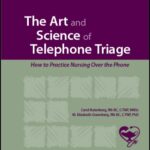The number of ClearTriage subscriptions you need may change as your practice grows or as you enter a busy season.
You can add subscriptions at any time. The new subscriptions can be pro-rated so they’ll be on the same billing cycle as your other subscriptions. Just contact us and we’ll take care of your needs.
You pay for your subscriptions in advance and there are no refunds, so you can only reduce the number of subscriptions you have at the end of your license period. For an annual subscription, respond to the invoice and we can adjust the number of subscriptions. For a monthly subscription, just contact us in advance of your monthly billing date and we’ll take care of it.



